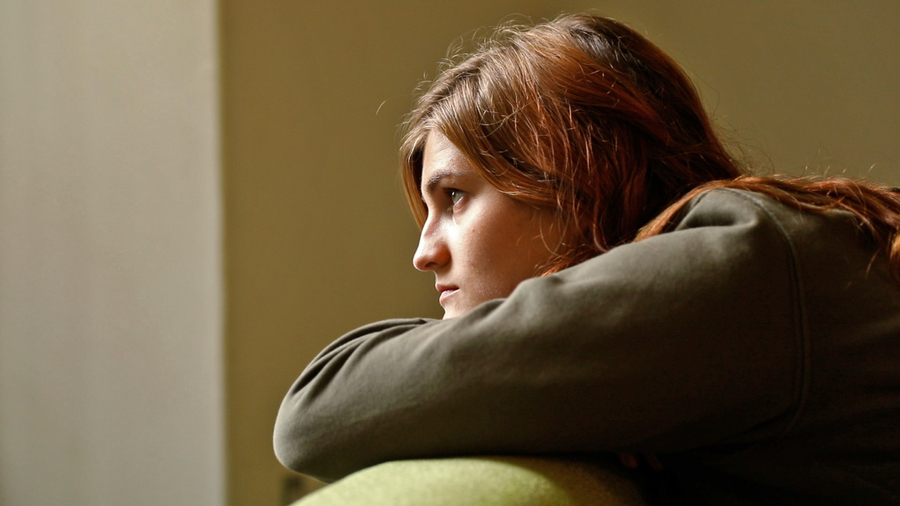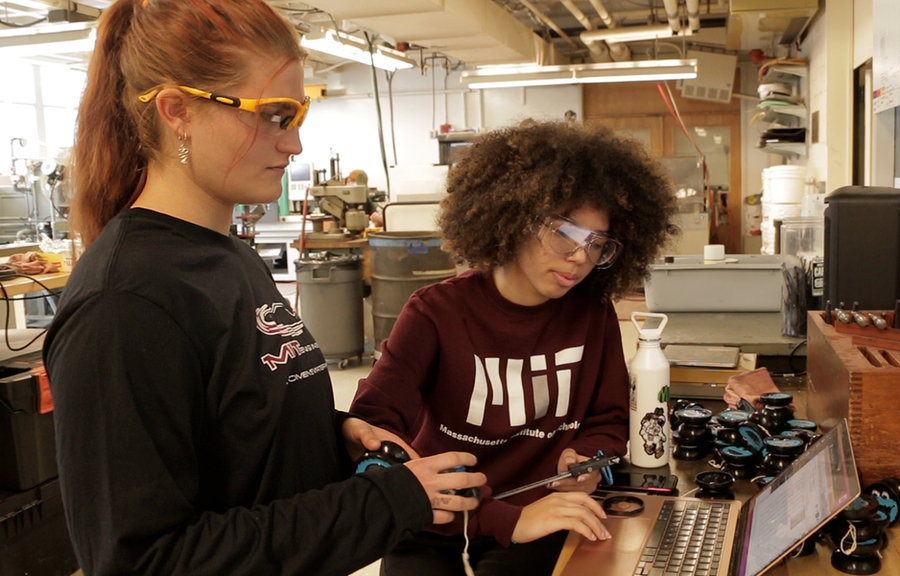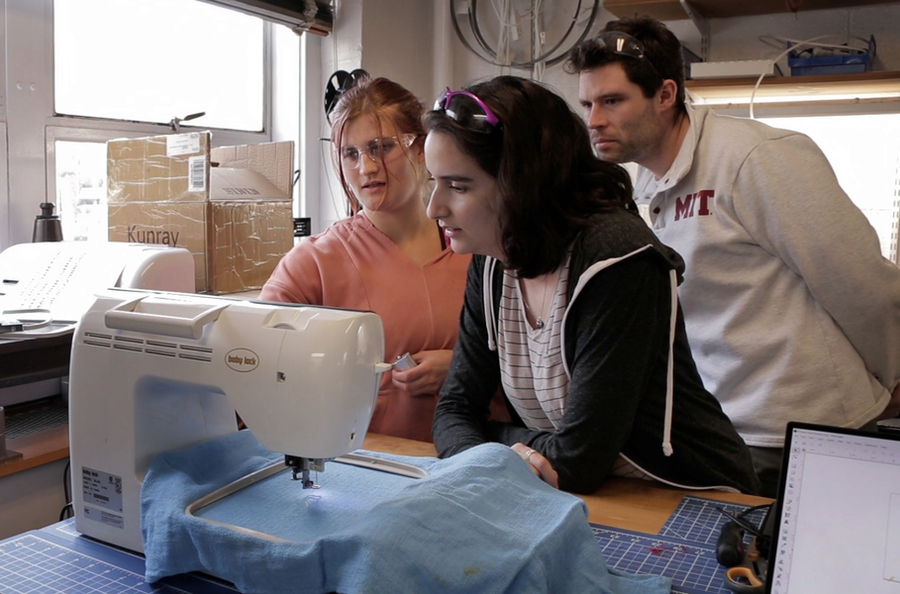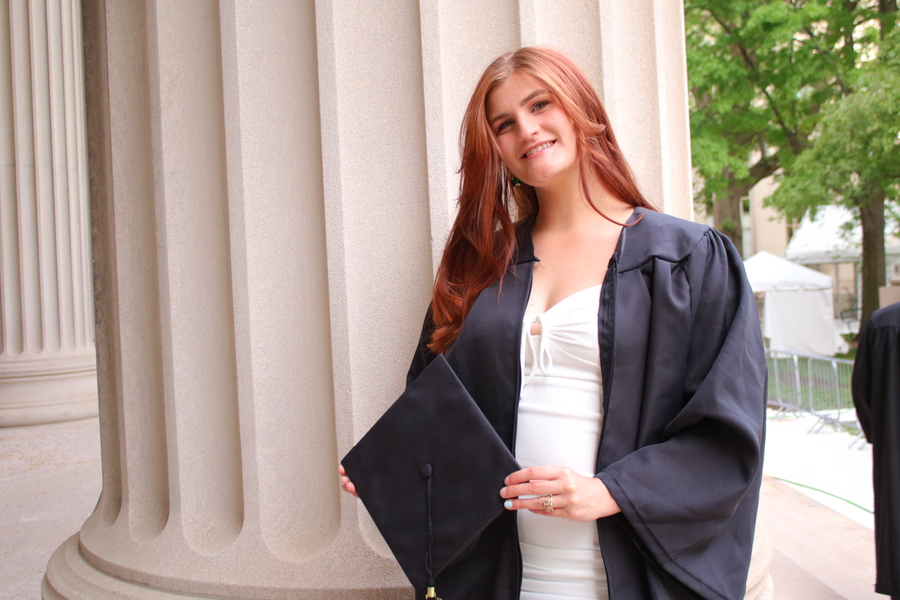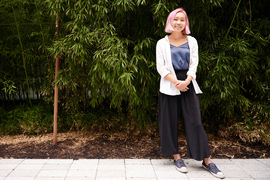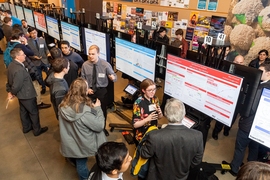Emily Satterfield likes to create. Whether she’s crocheting a dress she saw on TikTok, baking a cake, dancing at Cambridge’s Havana Club, or tinkering on a project, she fills her days with activities that channel her seemingly endless creativity.
“Being creative has always been a huge part of who I am. I get a new hobby every week. I just love anything that involves making things,” says Satterfield ’22, who recently graduated from MIT with a degree in mechanical engineering.
Raised in Lowell, Massachusetts, Satterfield was surrounded by creativity from a young age. Her mother is a teacher with a passion for art and oil painting. Her father is an electrical engineer with a knack for do-it-yourself automation projects. Growing up, she thought of art and engineering as two separate entities. You couldn’t be both an artist and an engineer.
“I always thought that engineering and art were opposites and you couldn’t really do both,” she says.
Upon enrolling in MIT, Satterfield set out to study electrical engineering at MIT. But she quickly found herself gravitating more toward mechanical engineering. For her, making robots move was exhilarating.
One of her first opportunities to build a robot came in the spring of her sophomore year. She enrolled in 2.007 (Design and Manufacturing I). Students in the class design and build their own robots. The class culminates in a boisterous final robot competition.
But halfway through the semester, Satterfield and her fellow students were sent home due to the Covid-19 pandemic. Stuck at home, she craved a creative outlet and took up drawing. Her time in quarantine helped her realize that her twin passions of art and engineering didn’t have to be mutually exclusive.
“That’s when I started to realize that art was who I was,” she says. “Especially as a mechanical engineer, I realized how engineering and art aren’t opposites. They actually go hand-in-hand. When you’re designing or building something, you are literally creating something new.”
Her drive for creation led her to an undergraduate research opportunity, known as a SuperUROP, with Professor David Hardt. The project examined the use of additive manufacturing to build low-cost homes for individuals experiencing homelessness. The goal is to utilize techniques like 3D printing to build lightweight homes made out of recycled plastics. She continued work on the project for her senior thesis.
In the senior capstone class 2.009 (Product Engineering Processes), Satterfield had an opportunity to merge her love of art and engineering further. Rather fittingly, her team built a prototype for a device named “Palette.” The portable product enables painters to tint paint to the exact shade they need onsite, eliminating time-consuming trips to the paint store. The team worked with Benjamin Moore to develop their product.
Working with her fellow mechanical engineering students on a large, intensive project like Palette gave Satterfield a preview of what working on an engineering team in industry would be like.
“Most Course 2 students like building things and talking about the things they make, which lends well to teamwork and teaching each other different things. Creative engineers are really good teammates, and I think that’s very true about most Course 2 students,” she says.
After graduating in May, Satterfield joined the creative engineers at SpaceX. Over the summer, she participated in the company’s associate program.
Satterfield now works as a structures engineer for the SpaceX Dragon spacecraft team. She and her coworkers develop technologies for the spacecraft. In early October, as the crewed Dragon took off from Cape Canaveral, technologies that Satterfield worked on were on the spacecraft.
“It was really cool to see something that I helped work on have an impact. Knowing that there are people inside the spacecraft really put things into perspective,” she adds.
Despite her busy schedule, she still has managed to find new hobbies — the latest of which involves refinishing furniture for her new apartment in California. Whatever the future holds, Satterfield will continue to pursue outlets for her creativity.
“I’m excited to see long term how I can take my weird, kind of discombobulated interests and combine them into my own thing,” she says.
